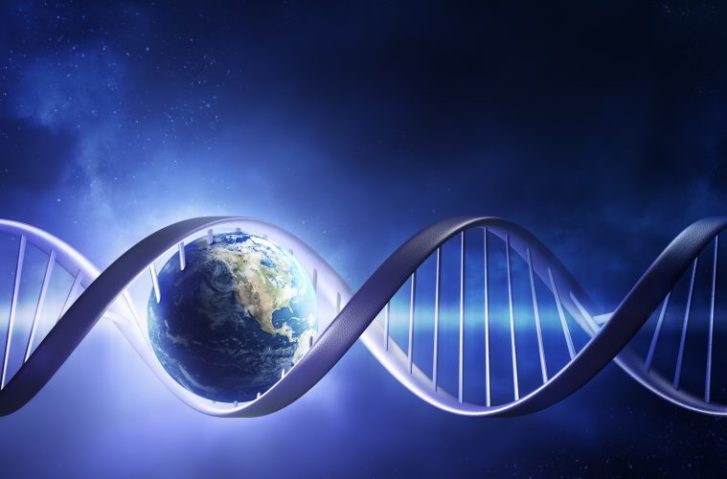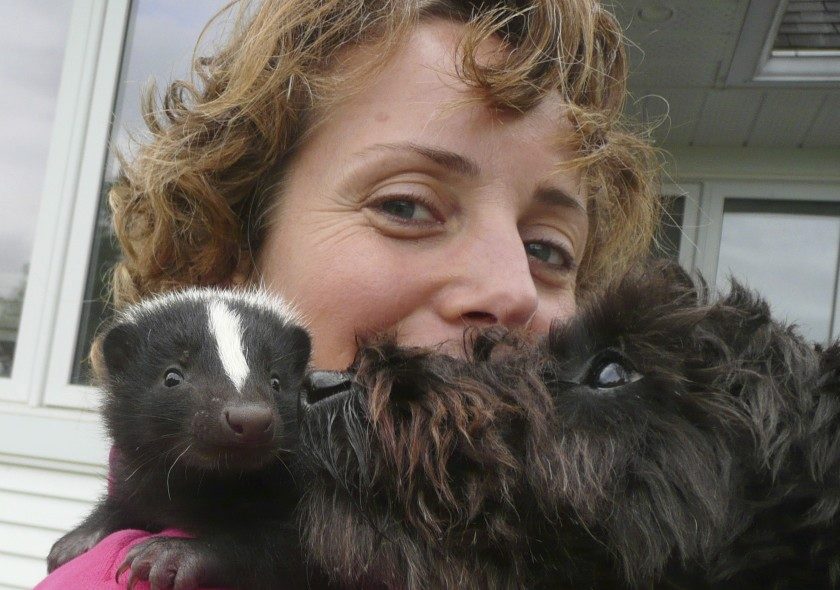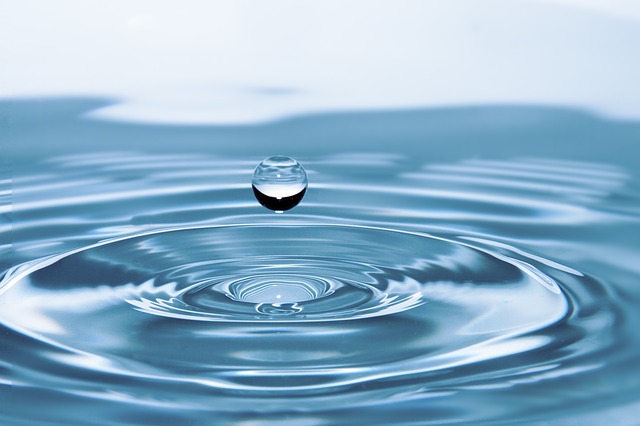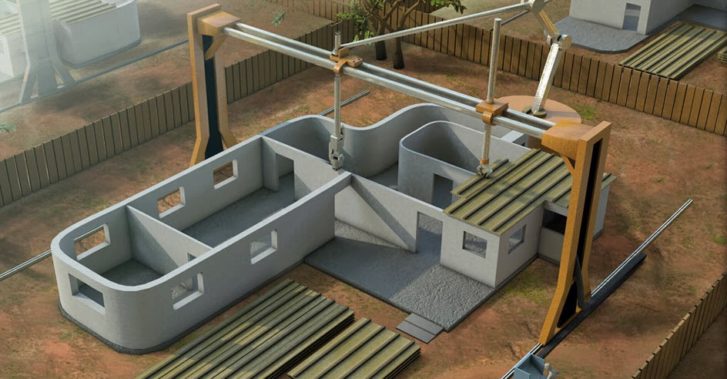Written by Sharing Sustainable Solutions
WATER FROM AN OLD HAND PUMP
Many of us have seen those old water hand pumps but few of us REMEMBER or know how to make them pumping water. Before one starts to pump himself crazy and not get any water, remember that water MUST be added to the upper cup at the base of the crank. The reason is simple. The addition of a cup or two of water will create the suction needed to pump the water. If you don’t add this water, you will pump air and think there is no water underground which would be false. Every morning or after a couple days without use, this same process must be repeated in order to create the vacuum. So better leave a jug nearby which contains enough water to get the machine going. This might sound silly or childish to say such a thing but one would be surprised how few of us know this tip.
WATER PRESERVATION AT SEA TIPS
Precautions to take to save your body fluids are equally important as your necessity to drink water.
- If you don’t have water to drink, don’t eat. Food needs water to be digested, especially protein.
- In hot countries, avoid sweating as much as possible so you will avoid losing body water faster.
- Dampen your clothes in the sea, wring them and wear them. Take advantage of any cooling wind. If your body is covered with a salt crust, remove it with a cloth.
- Stay in the shadows as much as possible.
- Sleep and rest as much as you can. You will reduce to a minimum the loss of body fluid.
- Prevent if you can sea sickness; there are pills for it.
- Don’t drink any alcohol, for it increases the dehydration process.
- If you smoke, you will increase your thirst. If you must smoke, make it in the evening or at night.
- To remove the thirst temptation, suck on a button, it will make you salivate more.
FINDING WATER
There are no handy kitchen faucets in the wilds—except in the larger campgrounds with their trailers and recreation vehicles bumper to bumper, and six-man tents guy line to guy line. If you’re not in one of these, and don’t happen to be hiking along the course of a river or canoeing over chains of lakes, where do you find water?
Your map will help if it’s detailed enough. Almost any water source of any size, including annual spring freshets, will be marked on a geodetic map. Even so, it’s a good idea to be aware where water is most likely to be found, in case you left the map at the last log rest stop. Besides, knowing nature, being familiar with its habits, gives you a real sense of understanding and accomplishment that is very much a part of the joy of camping.
In mountainous and forest regions such as Eastern and Western Canada, and the United States, and most of Northern Europe, water rarely presents a problem. Almost any downhill country, be it a long slow valley or a deep gorge, will lead to it. These natural formations developed through water erosion and the sculpture tells the tale.
As you walk, keep your eyes open for a change not only in terrain but in vegetation as well. If you see a crooked line of Willows or Willow like trees in the distance, IT’S ALMOST A SURE BET YOU’LL FIND A STREAM WHEN YOU GET THERE.
The mountain ahead is bare, with no water or greenery in sight. One side comes down steeply to a heavy rock formation; the other side slopes gently down to a valley and gently up to another mountain. Head for the sloping side rather than the steep escarpment. It has a much slower run off larger surface area, and thus a greater likelihood of retained water.
COTTONWOODS: In arid country, cottonwoods serve much the same purpose as willows in country more hospitable. A chain of cottonwood indicates a river bed. Whether that bed turns out to be wet or dry is another question. But if its dry, examine the ground by one of the largest and most ancient of the cottonwoods. On the inside bank of the old river’s curve, you will usually fund a small pool of water. At least there should be enough ground moisture so if you really need water you can dig down a foot or so and find seepage.
REMEMBER THOUGH IT DOES NOT USUALLY PAY TO DIG FOR WATER.
With the amount of energy used, the moisture lost in sweat usually far exceeds that gained from the hole you have dug.
ANY LUSH VEGETATION IN ARID TERRAIN INDICATES WATER IN ONE FORM OR ANOTHER. Birds such as Doves or Blackbirds, in flocks on the ground or quail in any quantity, are other signs of a water source nearby.
You will need 2 quarts (2 liters) a day under average conditions but in the desert or during periods of heavy activity, this raises to 4 quarts (4 liters) or more per person per day.
WATER BY THE BARREL
If water is plentiful, as well as wood, MAKE SURE YOU ALWAYS HAVE SOME HOT WATER boiling or close to the flame to keep it hot. REMEMBER, to sterilize water, it takes 10 minutes boiling no matter what some may say. Be safe.
THIRSTY
Drink when thirsty often and in small amounts. DON’T ATTEMPT TO RATION LIMITED QUANTITY OF WATER, LIFE WILL NOT BE PROLONGED. DON’T gulp water, swish first mouthful around mouth, swallow slowly, otherwise you will be sick and vomit this precious water.
Avoid unnecessary activities that cause perspiration. Seek shade. The less you perspire, the longer you’ll live without water.
SURVIVAL TIME CHART NO WATER
Some examples of expected survival times are: Fahrenheit 50 F. temperature without water, with minimum exertion- life expectancy is 14 days, with 1 gallon = 16 days. 120.F. Under same conditions = 3 days with 1 gallon = 4 days. Those are rough estimates for adults. For children and sick folks, the estimate is about 1/3 less. As you see, water is more important than food. Limit food and salt intake when water is limited, especially protein foods which absorb much more water from your body.
FINDING WATER and PURIFYING
Under hot, dry conditions where little possibility of finding water exists, the search for water will cause greater fluid loss than amount of water found. It is best to stay in shade, move as little as possible and wait for help.
Water Purifiers: FAQs
What are the most common contaminants?
Though many people worry about inorganic pollutants such as lead or pesticides, microbial contaminants are by far the greater threat. This may be a good time to define a few terms. Pathogen is the umbrella term that describes all disease-causing microbes. There are three basic categories of pathogen that can be found in untreated water:
- The first is protozoa. Protozoa include the well-known Giardia, and the not-so-well-known Cryptosporidium, or Crypto for short. These two scoundrels have been detected in 90% of U.S. surface water. Protozoa are the largest organisms of the three categories, ranging in size from 1-16 microns. They are more resistant to disinfection by iodine or chlorine than either bacteria or virus, but can be effectively filtered. Giardia is relatively large and easy to catch, but Crypto is a sneakier, smaller felon, “more likely to pass through units which depend upon filtration for parasite removal.” (Dr. Charles P. Gerba, Ph.D., University of Arizona, 1994.) To know whether or not a filter will protect you against Crypto, find out if it’s been tested with Crypto and proven to remove 99.9% of this organism. (FYI on microns: One micron is approximately 1/1,000,000of a meter. Anything smaller than 50 microns is invisible to the naked eye.)
- The second category is bacteria. Bacteria include such commonly-known organisms as Campylobacter, E. coli, Vibrio cholera, and Salmonella. Bacteria are intermediate-sized organisms, ranging from 0.2 to about10 microns. They respond well to disinfection, and can be effectively filtered by any filter that is proven to remove 99.9999% of bacteria.
- The third category is viruses. Commonly known viruses include Rotavirus, Hepatitis A, Norwalk, and Polio. Viruses are truly tiny; they range in size between 0.02and 0.085 microns, which makes them extremely difficult to filter. Viruses respond well to disinfection, and can be effectively inactivated using a purifier proven to remove or inactivate 99.99% of virus.
What are the incubation periods of common pathogens?
- For bacteria, these are the most common waterborne pathogens and their incubation periods: Campylobacter jejuni, 3-5 days; E. coli,24-72 hrs; Salmonella, 12-36 hrs; Shigella, 12-96 hrs; Vibriocholerae, 2-3 days; Yersinia enter ocolitica, 3-7 days.
- For viruses, these are the most common waterborne pathogens and their incubation periods: Adenovirus, 5-12 days; Enterovirus (Polio), 7-14 days; Hepatitis A, 15-50 days; Norwalk, 1-2 days; Rotavirus, 1-3 days; Coxsackievirus, 3-5 days; Hepatitis E, 15-64 days.
- For protozoa, these are the most common waterborne pathogens and their incubation periods: Giardia, 5-25 days or longer; Crypto,1-12 days. (From Control of Communicable Disease in Man. 1990.Abram S. Benenson, editor. 15th edition. American Public Health Association. Victor Graphics, Inc. Baltimore, MD.)
How do these contaminants get in the water?
The vast majority of pathogens are introduced by animals, but human beings are also carriers. Feces wash into drainages, carrying with them the disease-causing pathogens. Water moving through the drainages spreads pathogens downstream. Waterborne viruses are unique in that they are species-specific; i.e. human fecal matter must be present for there to be a viral threat to humans.
What happens if I drink bad water?
Reactions range from no symptoms at all, to desperate illness, to death for some immune-compromised individuals. Your reaction will depend on the pathogen and on your immune system.
Immune systems vary from individual to individual, based on genetic make-up and medical history. You may be one of the lucky few who experiences few, mild, or no symptoms. It is estimated that up to 30% of the population of the U.S. is resistant to Giardia, for instance. For the rest of us, after drinking contaminated water, there will be an incubation period of between a few hours and a couple of months, during which no symptoms will be evident. During this time, the pathogen is invading your system and multiplying. Crypto can produce up to 100 million oocysts each day in your gut! How’s that for a party you don’t want to host?)When concentrations of the pathogen reach a certain threshold, you enter the manifestation period during which you begin to feel symptoms.
That is the tidy medical description. Reality is not so tidy: infection by waterborne pathogens often leaves you looking like a dog¼s dinner and feeling like you have been hit by a truck. Fever, cramps, fatigue, diarrhea, nausea, dehydration, and general malaise can either sneak up on you slowly, or slam you all at once. During the manifestation period, being more than 10 seconds away from the nearest bathroom is often a bad idea. Some people bounce right back, some are hit so hard they’re bed-ridden or even hospitalized, and a very few can’t shake the disease at all. (For instance, over 1000 people were hospitalized in Milwaukee’s 1993 sCrypto outbreak, and over 100 immune-compromised individuals died.)
Here are a few common pathogens and afflictions you should know about:
- Cryptosporidium: A protozoa causing the parasitic gastrointestinal infection Cryptosporidiosis. The major symptom is diarrhea accompanied by cramping abdominal pain. Symptoms may come and go, but disappear in less than 30 days in most immunologically healthy persons. No treatment other than rehydration has been proven to be effective. The infection may contribute to death in the immune-compromised, especially AIDS patients, who may be unable to clear the parasite. Crypto is extremely resistant to common water disinfectants (Korich et al.,1990; Gerba et al., 1995), and water supplies should be filtered or boiled instead. (Control of Communicable Diseases in Man, Abram S. Benenson, editor, 15thEdition, 1990.)
- Giardia: A protozoa causing the parasitic gastrointestinal infection Giardiasis. Though often asymptomatic, this infection may be associated with chronic diarrhea, cramps, bloating, frequent stools, fatigue, and weight loss. Treatments include Flagyl, tinidazole (not licensed in the USA), Quinacrine, and furazolidone. Chemical disinfectants such as iodine or chlorine are less reliable than filtration or boiling, but will work if longer dwell times are used in cold or turbid water. (Control of Communicable Diseases in Man, Abram S. Benenson, editor, 15th Edition, 1990.)
- Travelers’ Diarrhea (TD) : A condition caused by a range of pathogens. The most common causes are the bacteria E.coli, Campylobacter jejuni, Shigella, and Salmonella. The Norwalk-like virus, the rotaviruses, Giardia, and Crypto have also been found to cause TD. Symptoms may include a twofold or greater increase in the frequency of unformed bowel movements, abdominal cramps, nausea, bloating, urgency, fever, and malaise. High-risk travel destinations include most developing countries, while intermediate-risk destinations include most of the Southern European countries and a few Caribbean islands. Average duration is 3-4 days. Risk is associated with improperly handled foods (especially raw or undercooked meat or seafood, raw fruits or vegetables), tap water, ice, and unpasteurized dairy products. Beer, wine, boiled beverages and carbonated beverages should be safe. Most cases of diarrhea are self-limited and require only replacement of fluids and salts. (“Health Information for International Travel 1995”, CDC, Atlanta, GA, August 1995.) Water should be purified through boiling, chemical disinfection, or use of an EPA-approved purifier.
If I have been infected by bad water, what should I do?
Seek medical treatment as soon as possible. As we said, some illnesses will go away without medication if allowed to run their course, but others won’t, and it can be difficult to know which type of creature got you. These are often tricky illnesses to diagnose. (92% of doctors in a Virginia study failed to diagnose the bacteria E coli in patients found to be infected with the pathogen, for example.) Your doctor should, however, be able to recommend an appropriate course of action.
If you are in a remote area and cannot get to a doctor quickly, keep yourself warm, HYDRATE with plenty of (safe) liquids, travel slowly, and rest frequently. Some over-the-counter medicines can be helpful in alleviating symptoms of waterborne diseases. Antidiarrheal drugs and general pain relievers are the most commonly recommended.
How can I make my water safe to drink?
First, there’s boiling. This will kill or inactivate most pathogens that may be present.
Second, there are chemical disinfectants. These kill or inactivate bacteria and virus very effectively, but are less reliable where Giardia is concerned, and are virtually ineffectual against Crypto.
Third, there’s filtration. This can protect against both bacteria and protozoa, but not against virus. Also, effectiveness varies among filters.
Fourth, there’s purification. Purifiers protect against all three classes of waterborne pathogen, and are regulated by the EPA. Boiling is the most straightforward, dead certain method of purifying water when time and fuel are plentiful. Many find it leaves a “flat” taste in the water, and waiting for the water to cool can be tiresome, but no pathogen can survive when you turn up the heat on its bathwater. According to the Centers for Disease Control, ?water should be brought to a vigorous rolling boil for one minute and allowed to cool to room temperature–do not add ice. At very high altitudes above 6,562 feet, for an extra margin of safety, boil for three minutes adding a pinch of salt to each quart, or pouring the water several times from one container to another will improve the taste.” (“Health Information for International Travel 1995″, CDC, Atlanta, GA, August1995.)
Chemical disinfectants such as iodine and chlorine are probably the most common method of water treatment. When used as the sole means of treatment, though, they have some serious limitations. Most importantly, they fail to protect against the nasty and prevalent Crypto, and are unreliable against Giardia. This is partly due to the sturdy protective shell on the Crypto oocysts, and partly due to the vulnerability of these chemicals to water conditions. Iodine’s effectiveness, for instance, drops dramatically as water becomes colder, is dirtied with organic decomposed materials (humic), or has a low(acidic) pH. In addition, it adds an unpleasant smell and taste to water, it requires 15-30 minutes to reach maximum effectiveness, and has been shown to contribute to liver damage after prolonged exposure. Also, pregnant women and persons with thyroid conditions are warned to consult their physicians before ingesting iodine.
Filters trap and hold pathogens as water passes through them. They are quick and easy to use, although they do require cleaning and maintenance. Viruses are too tiny to be filtered, but filters are the easiest, most economical method of making water safe to drink in the majority of situations, where viral protection is unneeded. Some filters only remove Giardia; the safer ones have test results proving they achieve the percentage removals of bacteria and protozoa established by the EPA for purifiers (See SweetWater’s Guardian and WalkAbout Microfilters.)
Purifiers are defined by the USEPA as units which ?remove, kill or inactivate all types of disease-causing microorganisms from the water, including bacteria, viruses and protozoan cysts so as to render the processed water safe for drinking.” (USEPA Guide Standard & Protocol for Testing Microbiological Water Purifiers, 1987.) Though purifiers typically combine chemical disinfection with filtration to eliminate pathogens, others may use ultraviolet irradiation, halogenated resins, disinfection alone, or other methods to do so. Which work best? Well, the bottom line is that reliable purifiers have test results proving they achieve the EPA-required percentage removals of bacteria, protozoa, and virus. (See SweetWater¼s Guardian+Plus Purifier.)
When would I need a purifier?
There are specific situations when you would need the added viral protection provided by a purifier; these are situations in which human fecal matter may be present in the water supply. In crowded camping/recreation areas where sanitation systems may be overloaded, or infants may be in or near the water; in developing countries with unsophisticated sanitation methods; and in areas of the U.S. susceptible to natural disasters such as floods or earthquakes which may overwhelm sanitation systems and compromise water supplies, viruses should be considered a threat. Purifiers represent the highest level of protection available, and are a good option for people who don’t want to take ANY chances with their water supplies. (SweetWater’s ViralGuard cartridge can be snapped into the base of the Guardian filter in viral threat situations, turning it instantly into a purifier.)
What kind of standards are there for filters and purifiers?
Purifiers are regulated by the EPA. There are currently no federal standards for the performance of filters, but there is a big effort on in the industry to establish standards for filters through the ASTM process. In the meantime, several manufacturers including SweetWater are voluntarily holding their filters to the EPA purifier requirements for protozoa and bacteria removal.
What are those EPA purifier requirements?
According to the EPA, a purifier must remove 99.9999% of waterborne bacteria, 99.9% of protozoa, and inactivate 99.99% of virus. This ability is tested in different water conditions, including “worst-case” water, which is cold, acidic, and turbid. Different percentage removals are calculated for the different pathogen types based on pathogen infectivity and presence in the water. For instance, there may be up to one million bacteria present in a liter of water, and it takes one thousand to infect, so eliminating 99.9999% of those bacteria represents adequate protection against bacterial infection from that liter of water .On the other hand, there may be up to one hundred protozoa present in a liter of water, and it may only take one to infect, so 99.9%removal is necessary to provide adequate protection. For viruses, there may be as many as 1000 organisms present, with as few as one necessary to infect, with a 99.99% removal rate rendering water safe to drink. So how do you know if a product cuts the mustard? Ask for test results showing the product achieves these safe waternines.
Originally posted @ Sharing Sustainable Solutions









